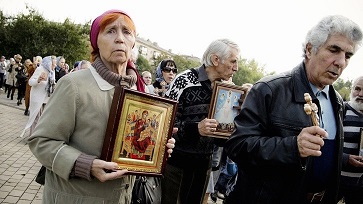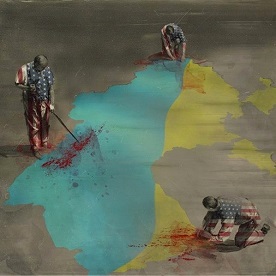Donetsk’s faint hopes for new ceasefire in Ukraine
Vera Graziadei in London & Ramil Zamdykhanov in Donetsk
A few months ago Donetsk was a vibrant, thriving and ambitious city. Hosting the European football championship in 2012 coincided with the peak of its hopes for world recognition. Today it stands partially destroyed, sad, hopeless and fearful for its future. The European metropolis of one million people now has around 80% of its previous population – mainly working classes; wealthier people, who could afford it, left the city in order to escape the war. Donetsk has become a centre of the Ukrainian conflict, after the Kiev government announced an ‘anti-terrorist operation’ (ATO) against ‘pro-Russian separatists’ in mid-April 2014.
Social life in public places is now almost non-existent – aside from one or two entertainment establishments, such as the Opera House. Most theatres, cinemas, cafes, bars and clubs are closed and many shops and businesses boarded up their windows.
The curfew, which was announced in summer, is still not cancelled, and even though there are rumours that one night club is functioning – the streets are empty at night. By day, there are no traffic jams in Donetsk anymore and ‘camouflaged armed men walk where shoppers and businessmen once strolled’. But not everywhere is quiet, depending on where you are – an occasional cannonade could be heard or even continuous explosions.


























